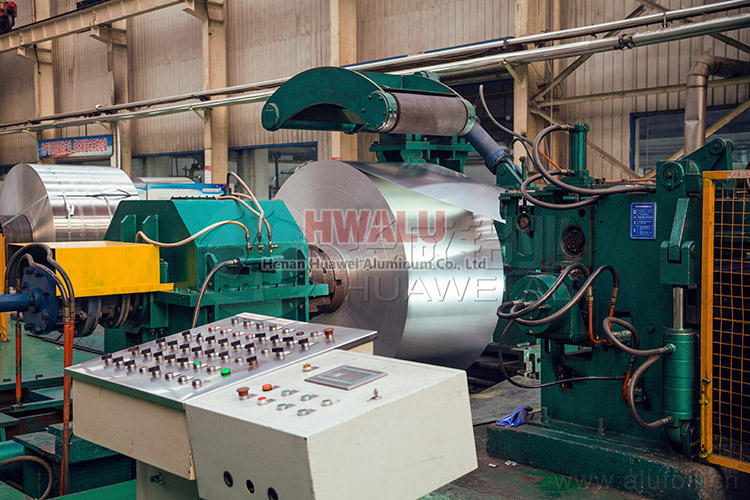The main alloying elements of the aluminum alloy 6000 series are magnesium, silicon, and copper, and their functions are as follows:
(1) Magnesium and silicon: Changes in the content of magnesium and silicon have little effect on the tensile strength and elongation of the annealed Al-Mg-Si alloy.
With the increase of magnesium and silicon content, the tensile strength of the Al-Mg-Si alloy in the quenched natural aging state increases, and the elongation decreases. When the total content of magnesium and silicon is constant, the ratio of the content of magnesium and silicon also has a great influence on the performance. With a fixed magnesium content, the tensile strength of the alloy increases as the silicon content increases. By fixing the content of Mg 2 Si phase and increasing the silicon content, the strengthening effect of the alloy is improved, and the elongation is slightly increased. With a fixed silicon content, the tensile strength of the alloy increases as the magnesium content increases. For alloys with a small silicon content, the tensile strength value lies in α(Al)-Mg 2 Si-Mg 2 Al 3. Three-phase area. The tensile strength of the Al-Mg-Si alloy ternary alloy is located in the α(Al)-Mg 2 Si-Si three-phase region.

The influence law of magnesium and silicon on the mechanical properties of the quenched artificially aged state alloy is basically the same as that of the quenched natural aged state alloy, but the tensile strength is greatly improved, and the value is still in the α(Al)-Mg 2 Si-Si three-phase In the zone, the elongation rate is correspondingly reduced at the same time.
When there is residual Si and Mg 2 Si in the alloy, the corrosion resistance decreases as the amount increases. However, when the alloy is located in the α(Al)-Mg 2 Si two-phase region and the Mg 2 Si phase is all solid-dissolved in the single-phase region of the matrix, the alloy has corrosion resistance. All alloys have no stress corrosion cracking tendency.
The alloy has a greater tendency to weld cracks during welding, but in the α(Al)-Mg 2 Si two-phase region, the composition ω(Si)=0.2%~0.4%, ω(Mg)=1.2%~1.4% Alloys and alloys with a composition of ω(Si)=1.2%~2.0% and ω(Mg)=0.8%~2.0% in the α(Al)-Mg 2 Si-Si three-phase zone have less welding crack tendency.
(2) Copper: After adding copper to the Al-Mg-Si alloy, the existence of copper in the structure not only depends on the copper content, but also is affected by the magnesium and silicon content. When the copper content is small, ω(Mg):ω(Si)=1.73:1, the Mg 2 Si phase is formed, and all copper is solid-dissolved in the matrix; when the copper content is high, ω(mg):w(Si )<1.08, the W(Al 4 CuMg 5 Si 4) phase may be formed, and the remaining copper will form CuAl2; when the copper content is high, ω(Mg):w(Si)>1.73, S(Al 2 CuMg ) And CuAl 2 phase. The W phase is different from the S phase, CuAl 2 phase and Mg 2 Si phase. In the solid state, only partial dissolution participates in the strengthening, and its strengthening effect is not as great as that of the Mg 2 Si phase.
The addition of copper to the alloy not only significantly improves the plasticity of the alloy during hot working, but also increases the heat treatment strengthening effect. It can also suppress the extrusion effect and reduce the anisotropy of the alloy due to the addition of manganese.
The trace addition elements in the 6 series aluminum alloy are manganese, chromium, and titanium, while the impurity elements mainly include iron, zinc, etc., and their functions are as follows:
(1) Manganese: Adding manganese to the alloy can increase strength, improve corrosion resistance, impact toughness and bending properties. Adding copper and manganese to AlMg0.7Si1.0 alloy, when ω(Mn)<0.2%, the strength of the alloy increases with the increase of manganese content. The manganese content continues to increase, and manganese and silicon form an AlMnSi phase, and part of the silicon necessary for the formation of the Mg 2 Si phase is lost. The strengthening effect of the AlMnSi phase is smaller than that of the Mg 2 Si phase. Therefore, the alloy strengthening effect is reduced.
When manganese and copper are added at the same time, the strengthening effect is not as good as that of manganese alone, but it can increase the elongation and improve the grain size of the annealed product.
When manganese is added to the alloy, severe intragranular segregation of manganese in the α phase affects the recrystallization process of the alloy and causes the grains of the annealed product to coarsen. In order to obtain fine-grained materials, the ingot must be homogenized at a high temperature (550°C) to eliminate manganese segregation. It is better to raise the temperature quickly during annealing.
(2) Chromium: Chromium and manganese have similar effects. Chromium can inhibit the precipitation of Mg 2 Si phase at grain boundaries, delay the natural aging process, and improve the strength after artificial aging. Chromium can refine the grains and make the recrystallized grains appear slender, which can improve the corrosion resistance of the alloy. The appropriate ω(Cr)=0.15%~0.3%.
(3) Titanium: Adding ω(Ti)=0.02%~0.1% and ω(Cr)=0.01%~0.2% to the 6 series aluminum alloy can reduce the columnar crystal structure of the ingot, improve the forging performance of the alloy, and make it fine Crystal grains of chemical products.
(4) Iron: A small amount of iron (when ω(Fe)<0.4%) has no bad influence on the mechanical properties and can refine the grains. When ω(Fe)>0.7%, an insoluble (AlMnFeSi) phase is formed, which will reduce the strength, plasticity and corrosion resistance of the product. When the alloy contains iron, it can make the color of the product surface after anodizing treatment deteriorate.
(5) Zinc: A small amount of impurity zinc has little effect on the strength of the alloy, and its ω(Zn)<0.3%.
